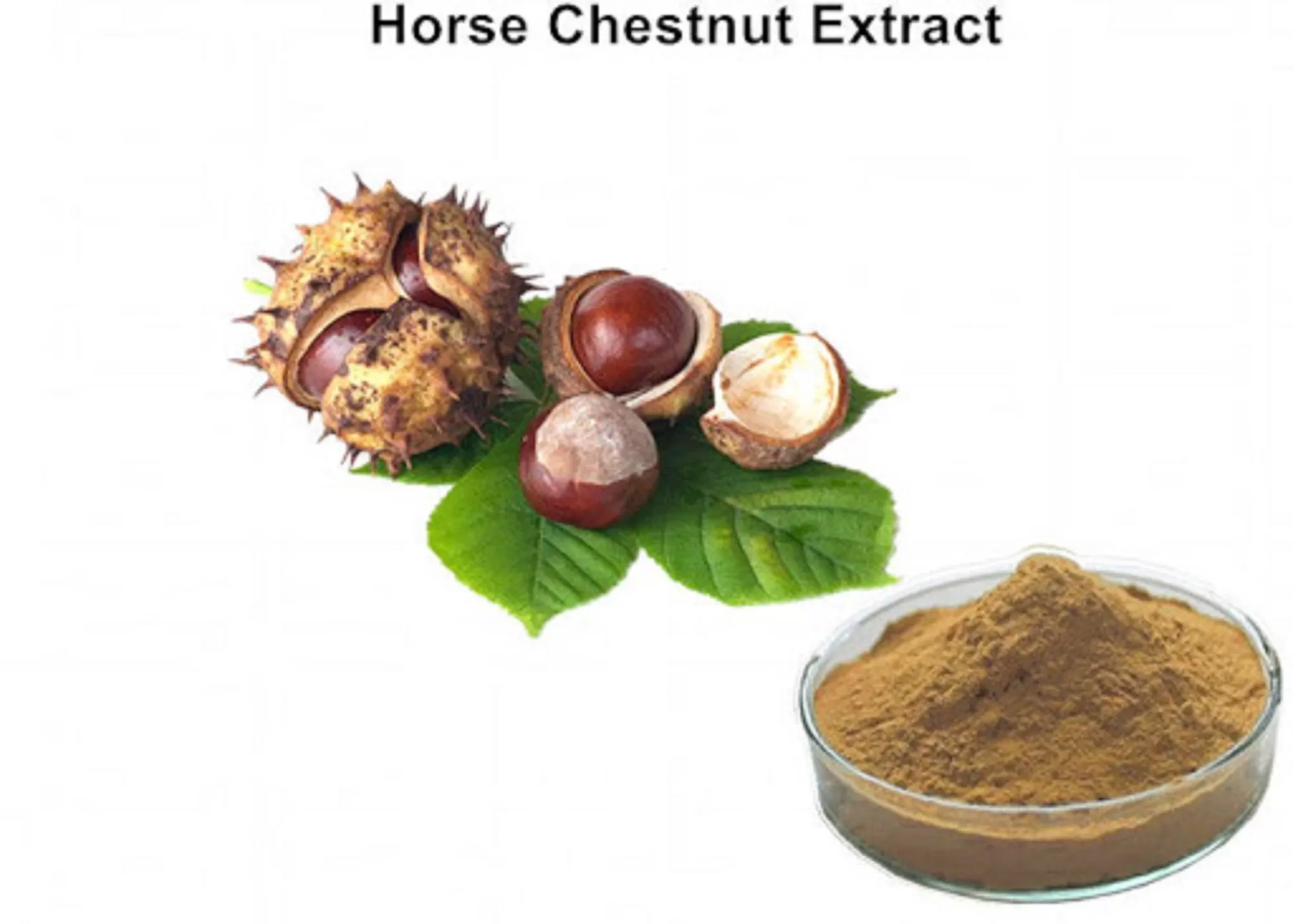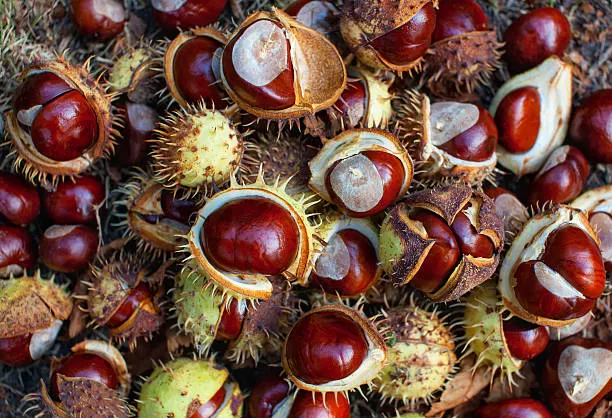- 0086-571-85302990
- sales@greenskybio.com
Is horse chestnut good for your legs?
2025-04-28
Exploring the Benefits of Horse Chestnut for Leg Health: A Comprehensive Overview
In recent years, natural remedies have gained considerable attention as potential solutions for various health concerns. Among these natural alternatives, horse chestnut, scientifically known as Aesculus hippocastanum, has been recognized for its interesting benefits, particularly for leg health. This article delves into the efficacy of horse chestnut in promoting leg health, exploring its benefits, clinical studies, applications, and potential considerations.
Introduction to Horse Chestnut
Horse chestnut is a deciduous tree native to the Balkan Peninsula but now commonly found throughout Europe and North America. The tree produces large, shiny brown seeds encased in spiky husks, commonly referred to as horse chestnuts. Historically, these seeds have been used in traditional medicine to treat a variety of ailments, owing to their rich content of saponins, flavonoids, and other bioactive compounds. The most significant of these compounds is escin, which is considered to be the primary active constituent.
Understanding Leg Health Concerns
Leg health encompasses a wide range of conditions, including chronic venous insufficiency (CVI), varicose veins, edema, and restless legs syndrome. These conditions can arise from lifestyle factors, genetic predispositions, or circulation issues, leading to symptoms such as leg pain, swelling, heaviness, and fatigue. Managing leg health effectively is crucial, as these symptoms can significantly impact an individual's quality of life and daily activities.
The Role of Horse Chestnut in Leg Health
Horse chestnut has been prominently studied for its role in improving circulation and reducing symptoms associated with leg health issues. Escin, the key component found in horse chestnut, is believed to strengthen the integrity of veins and capillaries, promote healthy blood flow, reduce inflammation, and alleviate swelling.
Chronic Venous Insufficiency
CVI is a prevalent condition characterized by impaired blood flow in the veins and often results in discomfort and swelling. Several studies have indicated that escin may improve venous tone and decrease capillary permeability, which, in turn, helps reduce the swelling and pain associated with CVI. In several clinical trials, horse chestnut seed extract has demonstrated efficacy comparable to compression stockings, a standard treatment for CVI.
Varicose Veins and Edema
Varicose veins occur due to weakened vein walls and valves, causing blood to pool in the veins and leading to swelling and discomfort. Edema, or fluid retention, can exacerbate these issues. Horse chestnut is thought to reduce the leakage of fluids into surrounding tissues, thereby mitigating swelling and enhancing blood flow. Consequently, individuals suffering from varicose veins and edema might experience symptomatic relief when using horse chestnut supplements.
Additional Benefits
While horse chestnut is not directly related to treating restless legs syndrome, its potential to improve blood circulation may help alleviate some discomfort associated with the condition. Enhanced circulation can also contribute to overall leg health, preventing the development of further vascular issues.
Scientific Evidence and Clinical Studies
Numerous studies have evaluated the efficacy of horse chestnut in treating leg-related conditions. A notable meta-analysis from 2012 reviewed several clinical trials assessing horse chestnut seed extract's effectiveness in managing symptoms of CVI. The analysis concluded that horse chestnut was significantly more effective than placebo in reducing leg pain, swelling, and heaviness, supporting its use as an alternative remedy for CVI.
Another study published in the "Archives of Dermatology" compared the effects of Horse Chestnut Extract with compression stockings. The results revealed similar improvements in symptoms, indicating that horse chestnut may be a viable option for individuals seeking non-invasive therapies.
Usage and Applications
Horse chestnut seed extract is available in various formulations, including capsules, tablets, gels, and creams. When opting for supplementation, it is advisable to consult with a healthcare professional to determine the appropriate dosage and form based on individual health needs.
Topical applications like gels or creams are particularly popular for addressing localized symptoms. They can be directly applied to the affected areas, providing a convenient option for those seeking immediate relief from leg discomfort.
While horse chestnut is generally safe when used appropriately, it is important to approach its use cautiously. Potential side effects may include gastrointestinal disturbances, itching, and headaches. Moreover, individuals with kidney or liver disease, pregnant or breastfeeding women, and those taking anticoagulant medications should exercise caution and consult healthcare providers before using horse chestnut products.
Conclusion
Horse chestnut has emerged as a promising natural remedy for leg health, offering benefits across a spectrum of conditions such as chronic venous insufficiency, varicose veins, and edema. Supported by scientific studies, its active compound escin contributes to enhanced venous function, reduced inflammation, and improved circulation, making it a valuable asset in managing leg discomfort.
By incorporating horse chestnut into a comprehensive health regimen, individuals can potentially improve their leg health and quality of life. Nevertheless, it is crucial to remain informed about potential contraindications and side effects. As with any health-related decision, consulting with a healthcare professional is advised to determine the best approach tailored to individual needs.
As our understanding of natural remedies continues to expand, horse chestnut remains at the forefront, celebrated for its potential to improve leg health and contribute to overall well-being.
- ▶ Hesperidin
- ▶ citrus bioflavonoids
- ▶ plant extract
- ▶ lycopene
- ▶ Diosmin
- ▶ Grape seed extract
- ▶ Sea buckthorn Juice Powder
- ▶ Beetroot powder
- ▶ Hops Extract
- ▶ Artichoke Extract
- ▶ Reishi mushroom extract
- ▶ Astaxanthin
- ▶ Green Tea Extract
- ▶ Curcumin Extract
- ▶ Horse Chestnut Extract
- ▶ Other Problems
- ▶ Boswellia Serrata Extract
- ▶ Resveratrol Extract
- ▶ Marigold Extract
- ▶ Grape Leaf Extract
- ▶ blog3
- ▶ blog4
- ▶ blog5
-
Is horse chestnut FDA approved?
2025-04-28
-
Does horse chestnut affect blood pressure?
2025-04-28
-
Is horse chestnut extract safe?
2025-04-28
-
Rosemary extract
2025-04-28
-
Carrageenan Extract Powder
2025-04-28
-
Andrographis Paniculata Extract Powder
2025-04-28
-
Chia Seed Powder
2025-04-28
-
Cranberry Extract
2025-04-28
-
Thunder God Vine Extract
2025-04-28
-
Dandelion Root Extract
2025-04-28
-
Aguaje Extract
2025-04-28
-
Centella Asiatica Extract
2025-04-28
-
Pueraria Lobata Extract
2025-04-28






























